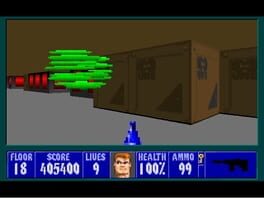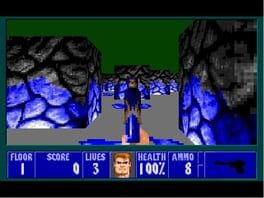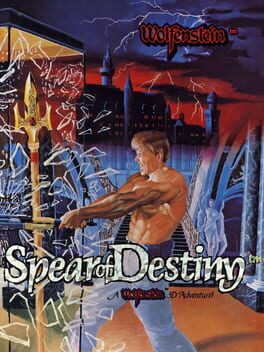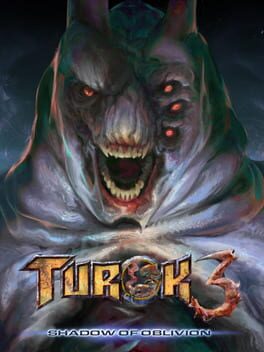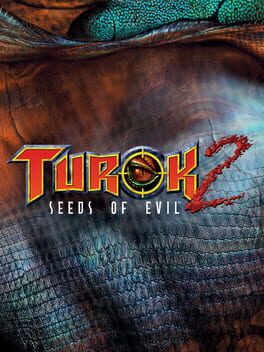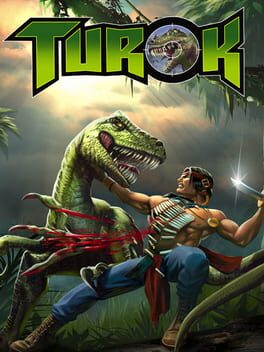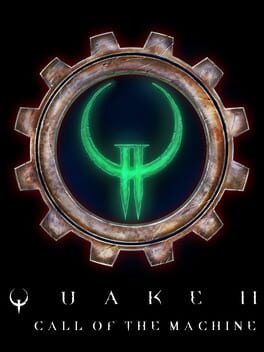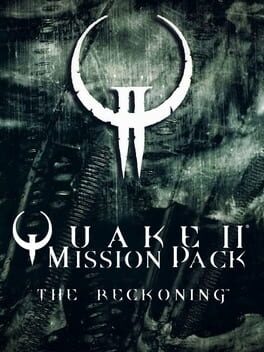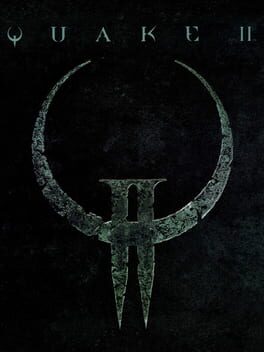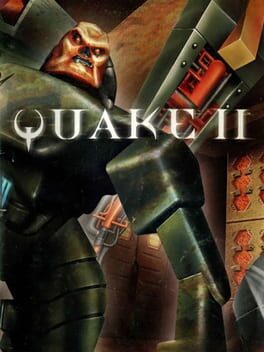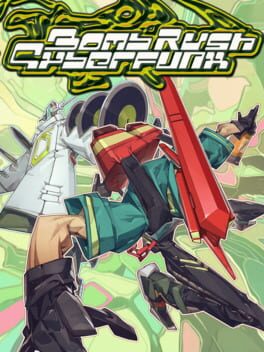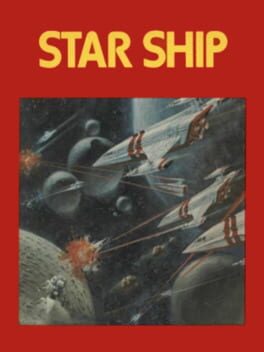ailuridae
BACKER
This was apparently supposed to be the sequel to Wolfenstein 3D, but it really only retains the three-firearm loadout and the fash baddies. The grenade guys and the monks are some of the most annoying enemies that I've encountered in a boomer shooter, as their earsplitting grunting can only be avoided if you splat them with explosive weapons—you can only hold one of those at a given time, an element that distinguishes this game from other contemporary titles in the genre. There's some interesting uses of verticality and one really good boss fight against NME, a robot equipped with a bottomless arsenal of explosives. Other than that, Dark War is a bit messy. I played it via the Nightdive port.
1992
1999
It's not as bad as I feared—Rage Wars is just kind of milquetoast, barely distinguishing itself from its contemporaries. This is a run-of-the-mill Quake knockoff on the Nintendo 64, but it's a pretty solid arena shooter given its platform. Rage Wars delivers a variety of single player and multiplayer game modes, and by playing those game modes, you'll unlock even more game modes, characters, and player skins. The profile feature lets you bring your progress between consoles via a memory card, allowing you to bring that memory card to parties, play with your buddies, and progress further. It's barely a Turok game, but I guess that doesn't really matter if it's still an overall fun experience.
It's Turok, but straight to the point. Turok 3: Shadow of Oblivion's structure is less unwieldy when compared to its predecessor, but by positioning itself as a fairly linear Half-Life clone, the game omits one of the best parts of previous Turok titles: exploration. At least there are multiple playable characters, the bosses are less lame, and the violence is still incredibly brutal.
Coming off my first playthrough of Turok, I was surprised to find that the gunplay in Turok 2: Seeds of Evil now demands precision from the player, and it rewards them with some of the grossest blood and gore that I've seen in a game. But to facilitate the enhanced combat mechanics, levels now have a plethora of corridors and maze-like segments, ditching the wide-open jungles that dominated the first game. There's also a surprising lack of dinosaurs! It almost makes me regret asserting that Turok lacks a cohesive setting, because this sequel feels more like a run-of-the-mill boomer shooter than its predecessor, albeit with some really gnarly and unique weapons.
2015
Ground Zero is better than its preceding mission pack, The Reckoning, but not by much. Rogue Entertainment's pack has a leg up thanks to interesting enemy types—like the Stalkers and the wall turrets—and a more varied arsenal of weapons. The more straightforward level design and more engaging scenarios also distinguish Ground Zero from its predecessor.
Unfortunately, there are still some lame enemies, like the upgraded Icarus and Medic, and there are some peashooter weapons like the ETF Rifle and Plasma Beam. Also, not a fan of the persistent sci-fi military base theming that all these Quake II units are stuffed with; levels blend together, and they're only distinguishable by their unique objectives.
But overall, I'd recommend playing Ground Zero over The Reckoning. It even includes double the number of deathmatch maps, raising the bar to fourteen maps over The Reckoning's seven. And if you were wondering, yes, the Nightdive port unsurprisingly runs as smooth as butter. I played mostly on PlayStation 5, and it was a seamless experience.
Unfortunately, there are still some lame enemies, like the upgraded Icarus and Medic, and there are some peashooter weapons like the ETF Rifle and Plasma Beam. Also, not a fan of the persistent sci-fi military base theming that all these Quake II units are stuffed with; levels blend together, and they're only distinguishable by their unique objectives.
But overall, I'd recommend playing Ground Zero over The Reckoning. It even includes double the number of deathmatch maps, raising the bar to fourteen maps over The Reckoning's seven. And if you were wondering, yes, the Nightdive port unsurprisingly runs as smooth as butter. I played mostly on PlayStation 5, and it was a seamless experience.
2023
Quake II is fast, gory, and a step up mechanically when compared to its predecessors. It splits its single-player mode into units, which are composed of connected levels. It feels like you're exploring a larger world in this game; a very different experience from the portal-connected worlds of the original Quake. Combine those elements with a Doom-like militaristic sci-fi setting and a shredding metal soundtrack, and you've got yourself a pretty solid id Software title.
Unfortunately, Quake II frequently suffers from truly convoluted level design. Like with previous games, you're sometimes required to backtrack with newfound key items, and it's significantly easier to become lost. If you thought The Pain Maze was too obtuse, just wait until you have to backtrack through multiple stitched-together and labyrinthine levels. The level objectives are also frustrating, especially if you pick up a save file after not playing for a while. Your primary objective at one point is, and I quote, "Establish communication link to command ship." Sure, whatever that means, man. I'm not even incompetent at these games, it's just that the monotony of running back and forth through samey sci-fi base levels really gnawed at me during this second playthrough. Everything blends together, and only a couple of memorable "units" stick out.
Thankfully, Nightdive comes to the rescue. Like with all of their other classic FPS ports as of late, the 2023 version of Quake II has everything you could ask for in a remaster. There's all the bells and whistles that Nightdive worked into the original Quake and then some, along with unique additions like hit markers, reworked enemy AI, new enemy attacks, and a brand new bonus campaign developed by MachineGames. They've even added a compass item that points you to your next objective, going as far as to create a breadcrumb trail that further nudges you towards it—convoluted levels be damned. Like with their Quake remaster, Nightdive has delivered the definitive version of Quake II, and it's available on all major platforms, warts and all.
Unfortunately, Quake II frequently suffers from truly convoluted level design. Like with previous games, you're sometimes required to backtrack with newfound key items, and it's significantly easier to become lost. If you thought The Pain Maze was too obtuse, just wait until you have to backtrack through multiple stitched-together and labyrinthine levels. The level objectives are also frustrating, especially if you pick up a save file after not playing for a while. Your primary objective at one point is, and I quote, "Establish communication link to command ship." Sure, whatever that means, man. I'm not even incompetent at these games, it's just that the monotony of running back and forth through samey sci-fi base levels really gnawed at me during this second playthrough. Everything blends together, and only a couple of memorable "units" stick out.
Thankfully, Nightdive comes to the rescue. Like with all of their other classic FPS ports as of late, the 2023 version of Quake II has everything you could ask for in a remaster. There's all the bells and whistles that Nightdive worked into the original Quake and then some, along with unique additions like hit markers, reworked enemy AI, new enemy attacks, and a brand new bonus campaign developed by MachineGames. They've even added a compass item that points you to your next objective, going as far as to create a breadcrumb trail that further nudges you towards it—convoluted levels be damned. Like with their Quake remaster, Nightdive has delivered the definitive version of Quake II, and it's available on all major platforms, warts and all.
1999
2023
If Bomb Rush Cyberfunk's sole goal was to be the greatest Jet Set Radio Future follow-up that never was, then it succeeds with flying colors. Otherwise, it's a bit too easy and kind of unambitious, despite being packed with a decent amount of content and some great tunes.
1977
Y'all are mean to this game; it has an average rating of 2.1 at the time of this review. It's not great or anything, but it's a lot of dumb fun and not much different than Asteroids or Berzerk in its level of mindlessness. I didn't play any of the multiplayer, but the three single-player modes are decent, and they're graphically very impressive for a 1977 home console game. After a while, I went from only being able to obtain scores in the teens to easily achieving under 50 points in 2/3 of the game modes—I still found it hard to rack up high scores in the lunar lander mode. Overall, Star Ship is nothing incredible, but it's visually novel and a good "turn your brain off" activity. I'll have to give the multiplayer a shot when I can find someone to play these stupid games with me.

